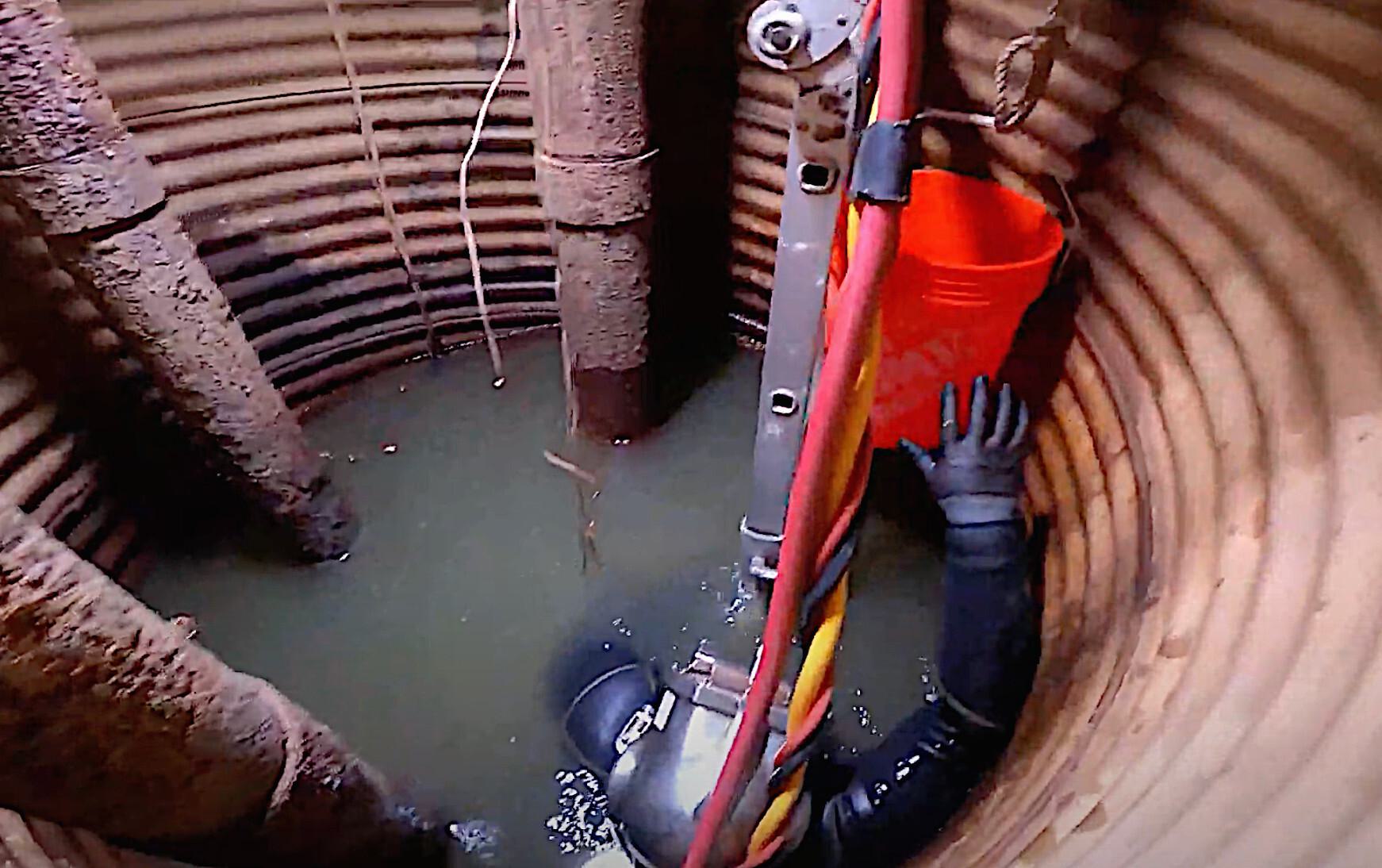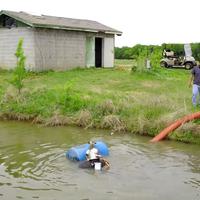Wet Well and Intake Maintenance: Protecting Your Golf Course's Most Critical Asset
When your golf course's wet well clogs or intake systems fail, the consequences cascade across every fairway and green on your property. What starts as a simple blockage quickly escalates into irrigation failures, brown patches, and ultimately unhappy members questioning their membership fees.
Golf course water systems aren't just infrastructure, they're the lifeline that keeps your course tournament-ready and revenue-flowing. A single wet well failure can shut down irrigation zones for days, leaving you scrambling with temporary pumps while your pristine conditions deteriorate by the hour.
The math is brutal: every day your irrigation systems operate below capacity costs you in maintenance crews, emergency repairs, and most critically, your reputation. Members expect championship-quality conditions year-round, and they won't hesitate to play elsewhere when fairways turn brown or greens become inconsistent.
Here's the reality most course superintendents face: wet well sediment buildup and intake blockages don't announce themselves, they develop gradually until total system failure forces your hand. Don't wait for emergency repairs to dictate your maintenance schedule. Proactive wet well and intake maintenance prevents disasters and protects your course's most valuable asset: consistent, professional playing conditions.
The Hidden Infrastructure Behind Every Pristine Fairway
Your golf course's irrigation system depends on infrastructure most players never see: wet wells and intake screens working around the clock beneath the surface. These critical components function as the heartbeat of your water distribution. Intake screens filter water from ponds or reservoirs, while wet wells house the pumps that push thousands of gallons through your irrigation network daily.
Are you dredging to restore water depth for irrigation pumps? Eliminate algae blooms that create unsightly conditions? Prevent flooding during heavy rains? Each goal requires different approaches, equipment, and timelines. Define your primary objective first, then identify secondary benefits.
Here's where golf courses face unique challenges:
- Grass clippings from mowing operations settle into intake areas, creating dense mats that block water flow.
- Fertilizer runoff doesn't just feed your turf, it feeds algae blooms that clog screens within days.
- Storm debris from surrounding landscapes compounds the problem, while seasonal organic matter creates a perfect storm of blockages.
When one intake screen clogs, the domino effect is immediate and costly. Pump stations strain harder, drawing excessive power. Irrigation zones shut down, creating dry spots that take weeks to recover. Emergency repairs during peak season can cost thousands in lost play time and turf replacement.
Don't wait for visible brown patches to signal system failure. By then, damage is already spreading across your course.
The Real Cost of Deferred Maintenance
Picture this hypothetical, but realistic scenario: It's Saturday morning of a big tournament, and your irrigation pumps fail. Your fairways are browning by noon, members are complaining by 2 PM, and you're facing $25,000- $75,000 in lost weekend revenue, plus emergency repair costs that can run 3-5 times higher than scheduled maintenance.
- Tournament weekends: $50,000-$100,000 in lost revenue per failure
- Member retention: Brown spots drive away your most valuable players
- Emergency repairs: 5x the cost of preventive maintenance (that proven 1:5 ratio every course manager needs to know)
- Reputation damage: Takes years to rebuild what you lose in one weekend
Your sediment buildup timeline? It's more predictable than you think. Minor accumulation starts within 6-12 months, pump efficiency drops 15-25% by year two, and complete failure hits within 2-3 years without intervention.
Don't wait for disaster, prevent it. Every day you defer maintenance, you're gambling with your course's reputation and your revenue stream. That’s an opportunity cost that greatly outlays any investment you need to make to normal maintenance and upkeep.

Your Preventative Maintenance Playbook
Your irrigation system is only as reliable as your wet wells and intake structures, and golf course superintendents can't afford system failures during peak season. Here's how we recommend tackling comprehensive maintenance before problems cost you water pressure and turf quality:
Seasonal Scheduling That Works: Spring pre-season inspections catch winter debris buildup, while mid-summer checks prevent sediment accumulation during heavy irrigation periods. Fall maintenance prepares systems for dormancy without costly surprises.
De-silting removes years of accumulated sediment that's choking your flow rates. Pump basin cleaning eliminates debris that damages expensive equipment. Intake screen servicing restores proper water velocity, critical for consistent pressure across your irrigation zones.
Advanced Tactics: When standard cleaning isn't enough, install wet well liners to prevent future sediment infiltration and perform realignment techniques that optimize water flow patterns.
Warning Signs You Can't Ignore: Reduced pressure at distant sprinkler heads, unusual pump cycling, low water alarms triggered by wet well sensors, or visible debris in your water samples mean immediate action is needed.
Don't wait for system failure during your busiest season, preventative maintenance costs a fraction of emergency repairs and lost turf recovery time.
It's Your Call: Be Proactive and Prevent a Potential Pump Failure
Your golf course's reputation rides on consistent playing conditions, and consistent playing conditions depend on reliable water systems working behind the scenes. When wet wells fail during peak season, you're not just facing repair costs, you're gambling with member satisfaction and tournament revenue that can take years to rebuild.
The choice is simple: spend thousands on scheduled maintenance, or risk tens of thousands on emergency repairs when systems fail at the worst possible moment. Courses risk losing entire weekend tournaments because they deferred wet well cleaning for "just one more season."
Here's what separates successful course operations from struggling ones: proactive superintendents who schedule maintenance before problems surface. Every month you wait, sediment builds deeper, pump efficiency drops further, and your next failure becomes more expensive and more disruptive.
AUS Dredge and Dive brings over two decades of specialized experience to golf course water system maintenance. Our professionally-certified commercial dive teams perform comprehensive wet well cleaning, intake maintenance, and system optimization that prevents failures before they impact your course operations.
Don't wait for brown fairways and angry members to force your hand. Your irrigation systems are too critical to leave to chance, and your course's reputation is too valuable to risk on deferred maintenance.





